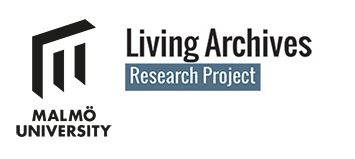The Living Archives performance AffeXity: Passages & Tunnels (2013) was featured in a recent talk by Edward A. Shanken at the Whitney Museum of American Art, along with with other artworks using augmented reality and layering.
Shanken’s talk was part of Shared Spaces, a symposium addressing the ways in which rapid, public sharing from within the museum transforms our attitudes toward works of art and the spaces that house them. In the talk, he highlights some of the ways art has been influenced by social media. When talking about AffeXity: Passages & Tunnels, Shanken says:
This is really a remarkable piece, in which the artists are trying to expose somatic and affective layers of urban spaces through dance improvisation and screendance. So you use a software programme which unlike Layar permits the viewing of video and sound. And in the premiere, the dancer you see appearing, in addition to the prerecorded dance of her moving in that physical space – so you have the layering of the virtual and the actual, the space, as well as the historic archival footage. Layering of histories, layers of spacing, layers of different imagery. And it became a very social environment where people were sharing their screens; we had to illuminate the tags, and the tags – as you see– they’re not QR tags, they are actual images so you get rid of the ugly QR aesthetic. I think that these sorts of works give us insight into possible futures that are unfolding.
View video embedded below (or here on Vimeo). Fast forward to 9:06.
Read more about AffeXity: Passages & Tunnels, Edward A. Shanken, and Whitney Museum of American Art.



